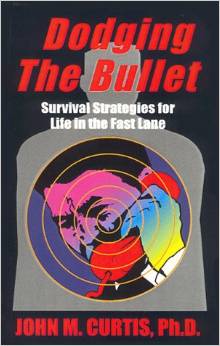Writing in the New York Times, Iran’s 56-year-old U.S.-educated Foreign Minister Mohammad Javad Zarif told the world the truth about Saudi Arabia spreading its ultra-conservative Wahhabism around the planet. Zarif proved he could walk the razor’s edge between Iran’s hardliners controlled by Iran’s Supreme Leader Ayatollah Ali Khamenei and deal with the U.S., negotiating a July 14, 2015 improbable nuclear deal with the P5+1, including the U.S., Britain, France, Russia, China and Germany. While there’s many complaints about the historic deal negotiated for over a year primarily by Secretary of State John Kerry and Zarif, the quid pro quo gave the Iranians $1.7 billion in cash in exchange for suspending it’s nuclear enrichment program, though skeptics doubt it’s not going on at Iran’s Top Secret underground Parchin facility, about 20 miles southwest of Tehran.
Zarif’s op-ed was meant to expose to the world how Saudi Arabia exports its radical Wahhabi brand of Islam around the globe, including funding rebel groups in the Syrian War. Most U.S. and foreign press refuse to identify Saudi Arabia in the Syrian War. Zarif didn’t link Wahhabism to the current Syrian War where a determined Saudi-backed insurgency begun at height of the Arab Spring March 15, 2011 seeking to topple the Shiite government of Syrian President Bashar al-Assad. After nearly six-years, 300,000 deaths, 12 million displaced to neighboring countries and Europe, called the worst humanitarian crisis since WWII, the U.S. and Russia finally agreed Sept. 10 to a ceasefire. Let there be no mistake, the Sept. 10 ceasefire notified Saudi Arabia to stop funding the nearly six-year-old proxy war. Unlike other Mideast dictators, al-Assad resisted the Wahhabi takeover of Damascus.
Zarif points out that for over 30 years, maybe longer, the Saudis have exported its reactionary form of Sunni Islam around the globe. “Over the past three decades, Riyadh has spent tens of billions of dollars exporting Wahhabism through thousands of Mosques and madrasas across the world,” wrote Zarif. “From Asia to Africa, from Europe to the Americas, this theological perversion has wrought havoc,” said Zarif, not pointing directly to the Saudi proxy war in Syria. While Iran has its own agenda around the Middle East and North Africa, it’s not, as Democratic nominee former Secretary of State Hillary Rodham Clinton points out, “the world’s chief state sponsor of terrorism.” Hillary gives the Saudis a pass, while pointing fingers at Iran. Zarif hoped to expose the glaring reality that Saudi Arabia, not Iran, is the world’s chief state sponsor of Islamic extremism and global terrorism.
President Barack Obama has spent nearly his entire presidency backing the Saudi proxy war in Syria. Had Obama intervened early telling the Saudis to stand down, there’s no question thousands of lives would have been saved. When you consider the refugee crisis that overwhelmed Europe, early intervention would have prevented the U.K’s June 23 Brexit vote, primarily based on growing European Union pressure to accept more Syrian refugees. Backing the Saudi proxy war has painted Obama into a corner until he abruptly flip-flopped, finally taking the Russian and Iranian position to let al-Assad stay in Damascus. Recent public spats with Iran’s Ayatollah Khamenei and Saudi Grand Mufti Abdul-Assiz ibn al-Ash Sheikh show the longstanding feud between Sunnis and Shiites. Zarif points out that almost all Islamic terror groups are Saudi-backed Wahhabi-inspired groups.
Today’s most virulent terror groups, including the Islamic State of Iraq and Syria [ISIS] and al-Qaeda, Nigeria’s Boko Haram, are all Saudi-backed Wahhabi-inspired groups. How Obama could align U.S. foreign policy in Syria to back rebel groups with ties to ISIS and al-Qaeda trying to toppled al-Assad is anyone’s guess. Only unspecified financial arrangement could be responsible to how the White House backed the Saudi proxy war. Until Sept. 10, Obama was joined at the hip with Saudi Arabia. Saudi’s 52-year-old Foreign Minister, speaking for King Salman, has stated publicly that the Syrian War won’t end until al-Assad leaves Damascus. Only Republican nominee real estate tycoon Donald Trump comes closest to recognizing the problem, promising no more Middle East Wars. Obama and Hillary’s backing of Saudi Arabia’s Syrian proxy war sent U.S.-Russian relations to the bottom.
Signing a mutual defense cooperation agreement, Kerry and Russian Foreign Minister Sergei Lavrov finally turned the corner on the Syrian War. When peace talks resume in Geneva, U.N. Envoy Staffan de Mistura can’t allow the same destructive rhetoric from Saudi Arabia’s High Negotiation Commission to derail the ceasefire. However many rebel groups Saudi backs, Russian President Vladimir Putin has made clear he considers al-Assad the sovereign leader of Syria. How Saudi Arabia thinks it can carve up Syria’s territorial integrity is anyone’s guess. Without White House backing, Saudi Arabia will be forced to vacate territory seized during the Arab Spring. Speaking at a Damascus mosque to commemorate Eid al-Fitr, the end of Ramadan, al-Assad insisted Syria wouldn’t rest until it’s recaptured every inch of land taking by Saudi-backed rebel groups.



